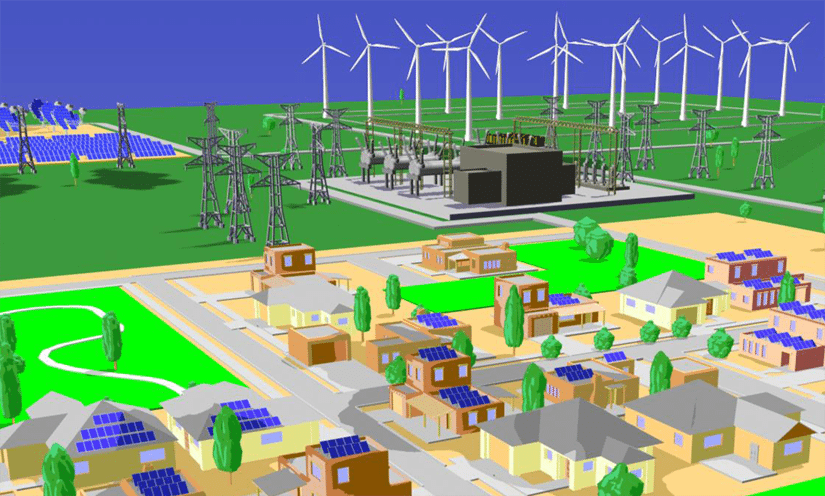Your first thought about microgrids might be that they’re just a small aspect of our energy future. But you’d be wrong – microgrids are an increasingly important factor in distributed generation, grid reliability, and the green economy.
Total Microgrid Revenue Forecast 2013-2020 image via Navigant Research
Two new reports from Navigant Research reveal more than 400 individual projects are currently in operation or under development worldwide, and forecast the global market will pass $40 billion in annual revenue by 2020.
Microgrids have traditionally been a mainstay of campus-sized institutions like industrial parks or colleges, but that paradigm is shifting as the US military works to reduce climate risks and improve fuel security while local governments plan for resiliency in the face of climate change-fueled severe weather.
22% Growth In Six Months
Navigant broadly cites the US Department of Energy’s definition of microgrids as interconnected demand and generation with defined boundaries that can either connect or disconnect from the grid to keep the lights on at any time. This definition is expanded in their research to include remote microgrids, or those operating in “island mode” for a majority of the time.
Using these guidelines, the Microgrid Deployment Tracker 4Q12 identifies at least 405 projects currently planned, proposed, under development, or fully operating. These projects represent 3.2 gigawatts (GW) total capacity, up from 2.6GW in 2Q 2012. 67 new project entries representing 571 megawatts (MW) of new capacity are noted across that time frame, a 22% jump in just six months.
North America dominates the global market with a majority of overall market share and 2GW total capacity, followed by Europe at 384MW and the Asia-Pacific region with 303MW.
Microgrid Capacity By Region 4Q 2012 image via Navigant Research
New Trends: Greenfields, Military, Extreme Weather
While most microgrids in operation today are essentially retrofits combining existing generation and demand with new technology, Navigant notes the majority of new projects are greenfield, relying on distributed generation (mainly cheap solar PV) and energy storage.
Two additional market trends are also apparent in Navigant’s report – a shift toward military microgrids and growing influence of extreme weather threats in new investments for local communities.
The US Department of Defense had the largest single increase, gaining 21 new projects for 350MW of capacity, pushing overall military microgrid capacity to 578MW.
Microgrid Capacity By Market Segment 4Q 2012 image via Navigant Research
Extreme weather is also a development driver for local communities, notes Navigant, saying “natural disasters underscore the need for resilient infrastructure for vital electricity services.” Two examples stand out in the report: Connecticut’s effort to launch 150 local microgrids after Hurricane Sandy, and Japan’s Sendai 1MW microgrid, which operated for two days in island mode after 2011’s 9.0-magnitude earthquake.
More Microgrids=More Market Revenue
Accordingly, as microgrids move from pilot programs to full-scale commercialization, the market’s fortunes are starting to boom. Navigant’s Market Data: Microgrids analysis projects market revenue will jump from $8.3 billion in 2013 to more than $40 billion annually by 2020.
North America is poised to continue dominating global installations, and should increase to 5.9GW total capacity by 2020 for 65% of global market share. Asia-Pacific is projected to jump to the second overall spot with 2GW of capacity for 22% of market share, while Europe will fall to third with 694MW for 8% market share.
Ideal For The Clean Energy Transition?
So as the world moves toward a clean energy economy in the face of climate change, it’s likely microgrids represent the best possible solution for reliability concerns.
“Microgrids can provide a quality and diversity of services that incumbent utilities have been unable to match,” said Peter Asmus, Navigant’s principal research analyst. “Extreme weather events and growing recognition of microgrids as potential sources of demand response are building engineering and cultural support.”
This article was originally published by CleanTechnica. Reproduced with permission













